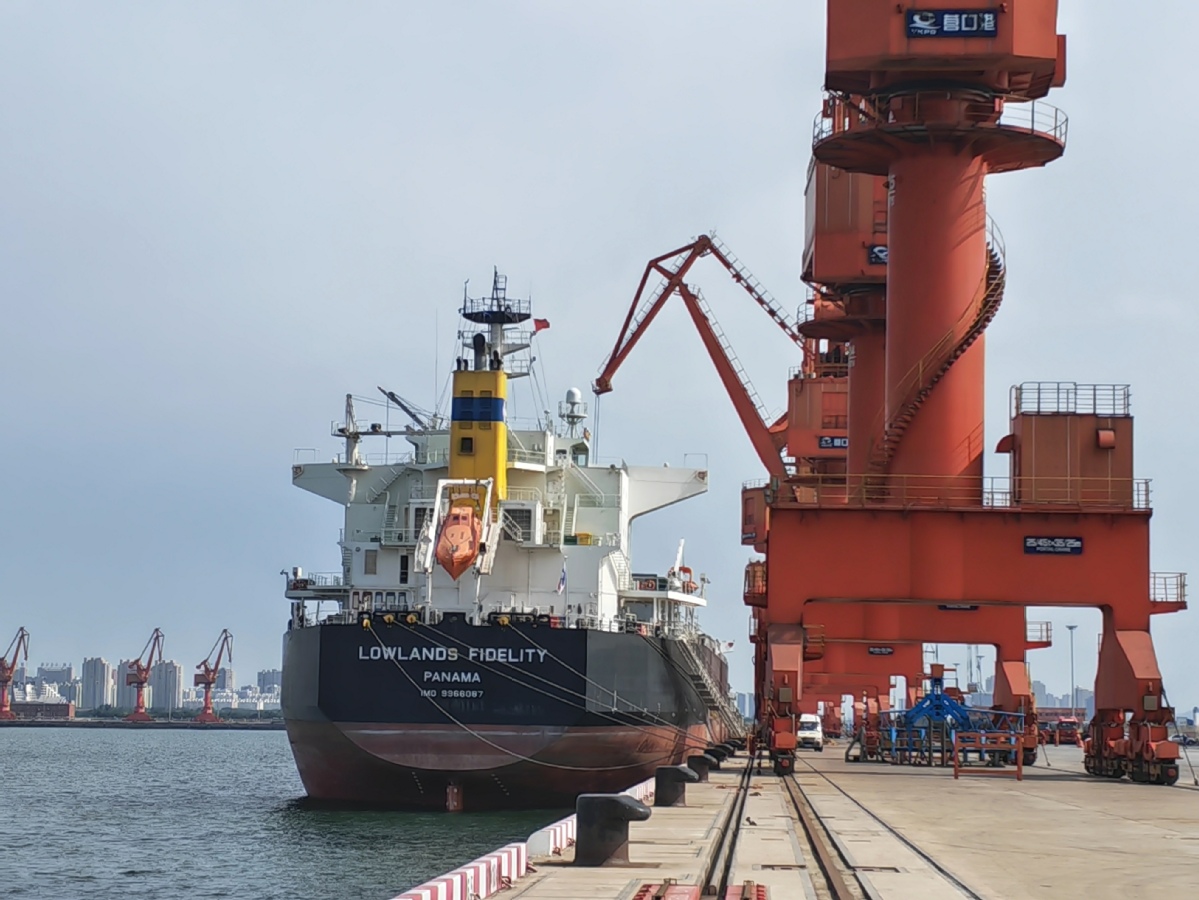
Once the cradle of the country's industrial development, Northeast China is seeking to "integrate the old with the new", an approach that is transforming traditional manufacturing into specialized high-end manufacturing.
The burgeoning ice and snow economy has become a new driver of this transformation. Fueled by the Harbin Ice and Snow Festival and the 9th Asian Winter Games in February, the consumption market in the three northeastern provinces of Heilongjiang, Jilin and Liaoning continues to heat up, significantly increasing tourism revenue and creating new opportunities for the transformation of traditional manufacturing industries.
Also, Northeast China's manufacturers are pioneering cutting-edge innovations in ice and snow equipment, from titanium-reinforced ice skates to 3D-printed skiboards by using advanced composite materials.
READ MORE: Xi calls for promoting full revitalization of Northeast China
Besides, carbon fiber snowboards are filling the domestic market gap, and smart automated ice block production equipment and a multi-robot collaborative large-scale smart ice (snow) carving system developed by Harbin Institute of Technology have been used in the Harbin Ice and Snow World. Manufacturers in Northeast China are also using automotive manufacturing technologies to make ice and snow equipment.
Technological innovation is the engine powering the upgrading of traditional manufacturing, with the region's strong industrial foundation providing ample support. Additionally, digital transformation has emerged as a powerful productivity multiplier. For example, the digital upgrading of a Harbin-based boiler enterprise has increased its processing efficiency by more than 300 percent.
This high-tech leap is breaking the monopoly of foreign companies in the sector. In Shenyang, Liaoning province, a robotics pioneer has developed three major categories of robots while making continuous advancements in artificial intelligence and big data. And a Harbin-based company has independently developed the world's first 500-MW pelton wheel turbine, diminishing foreign companies' technological dominance.
Both the central and local governments have issued policy documents to provide strong support for Northeast China's industrial upgrading. In particular, a plan for promoting the high-quality development of the ice and snow economy encourages equipment manufacturers to collaborate with research institutes to overcome key technological challenges and develop winter sports equipment.
The three provinces, on their part, have formulated ambitious, region-specific development plans for their respective ice and snow economy. Heilongjiang, for example, has implemented a collaborative plan of "enterprises proposing problems, research institutions developing solutions, and the market validating results" to expeditiously commercialize technological achievements. And Liaoning has established an integrated platform for collaboration, commercializing 55.5 percent of its technological achievements. The progress of these plans is promoting technological innovation and fostering the integration of industries and markets.
A number of enterprises manufacturing high-quality ice and snow equipment have set up shops in Heilongjiang, fostering the clustered development of the ice and snow equipment industry. Jilin, on the other hand, leveraging its advantages in the automotive industry, is developing specialized clusters for small automated snow vehicles, snowmobiles and related equipment, while the Shenyang Economic and Technological Development Zone in Liaoning has taken measures to improve high-end equipment manufacturing, forming industrial clusters for nuclear power equipment, robotics and other advanced sectors.
Industrial parks are vital to building industrial ecosystems. In Jilin, for instance, plans are underway to establish an ice and snow equipment industrial park, while Heilongjiang is developing key projects including the China-Shanghai Cooperation Organization Ice and Snow Sports Demonstration Zone, an equipment industrial park and a digital industrial park for ice and snow sports. And the Shenyang International Software Park in Liaoning has already attracted more than 40,000 young talents.
Yet the region still faces various challenges. For instance, core technologies are developing at a sluggish pace due to the lack of major breakthroughs and the sector's dependence on imports for key components — and the ice and snow equipment sector is struggling because of insufficient market recognition and brand influence.
Moreover, brain drain, lack of market vitality and other factors continue to hinder industrial upgrading.
ALSO READ: New opportunities for Liaoning to revitalize industrial base
Therefore, the three provinces should continue to pursue innovation-driven development, intensify efforts to clear the bottlenecks hindering the development of core technologies, and boost their independent innovation capabilities across industries. They should also focus on brand-building to gain greater market recognition.
As for the business environment in Northeast China, it needs to be further improved, in order to attract more talents and capital, because industrial revitalization is an ongoing market-driven process.
Through the catalytic effects of the ice and snow economy, technology-driven innovation, policy-market synergy, and the development of the industrial ecosystem, Northeast China can inject new vitality and dynamism into its industrial sector.
The author is an associate research fellow at the Heilongjiang Provincial Academy of Social Sciences.
The views don't necessarily reflect those of China Daily.


